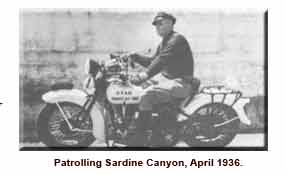Accident Reduction Efforts
Throughout the 1930s, the traffic on Utah’s highways steadily increased at an average rate of approximately 14 percent annually. This increase was also reflected in a continual rise in traffic accidents and fatalities. During a training session held in 1938, Superintendent Groo asked for input from all patrolmen as to how to reduce this sharp rise in accidents. Some of their comments were as follows:
Paul Christison, Nephi: “Rigid enforcement, combined with education, so drivers will observe even minor regulations, seems to be the best solution.”
T. E. Hunsaker, Logan: “I believe the public should become better acquainted with actual rules and regulations.”
Jack Young, Vernal: “Stricter enforcement is the solution.”
R. J. Barton, Salt Lake City: “Improvement of road conditions, eliminating hazards so we have better highways, will help.”
R. M. Clawson, Ogden: “I believe stricter enforcement, combined with education which starts in the elementary schools, will help solve the problem.”
In 1938, the Utah Highway Patrol adopted the National Safety Council’s standard accident report form. This form helped advance the study of accident causes and the treatment of high accident locations. The form utilized a system called “standard mechanical tabulation” which was used for future statistical analysis.
Something new on the form was the recording of driver’s experience. These reports were also filed by location to facilitate other studies designed to help reduce accidents. The concepts used on these forms are still employed today by all police agencies in the state of Utah to categorize, identify, and help reduce the amount and the severity of accidents. The information gathered from these reports is used in legislation, education, road design, training, engineering of vehicles, and a variety of other functions relating to highway safety.

